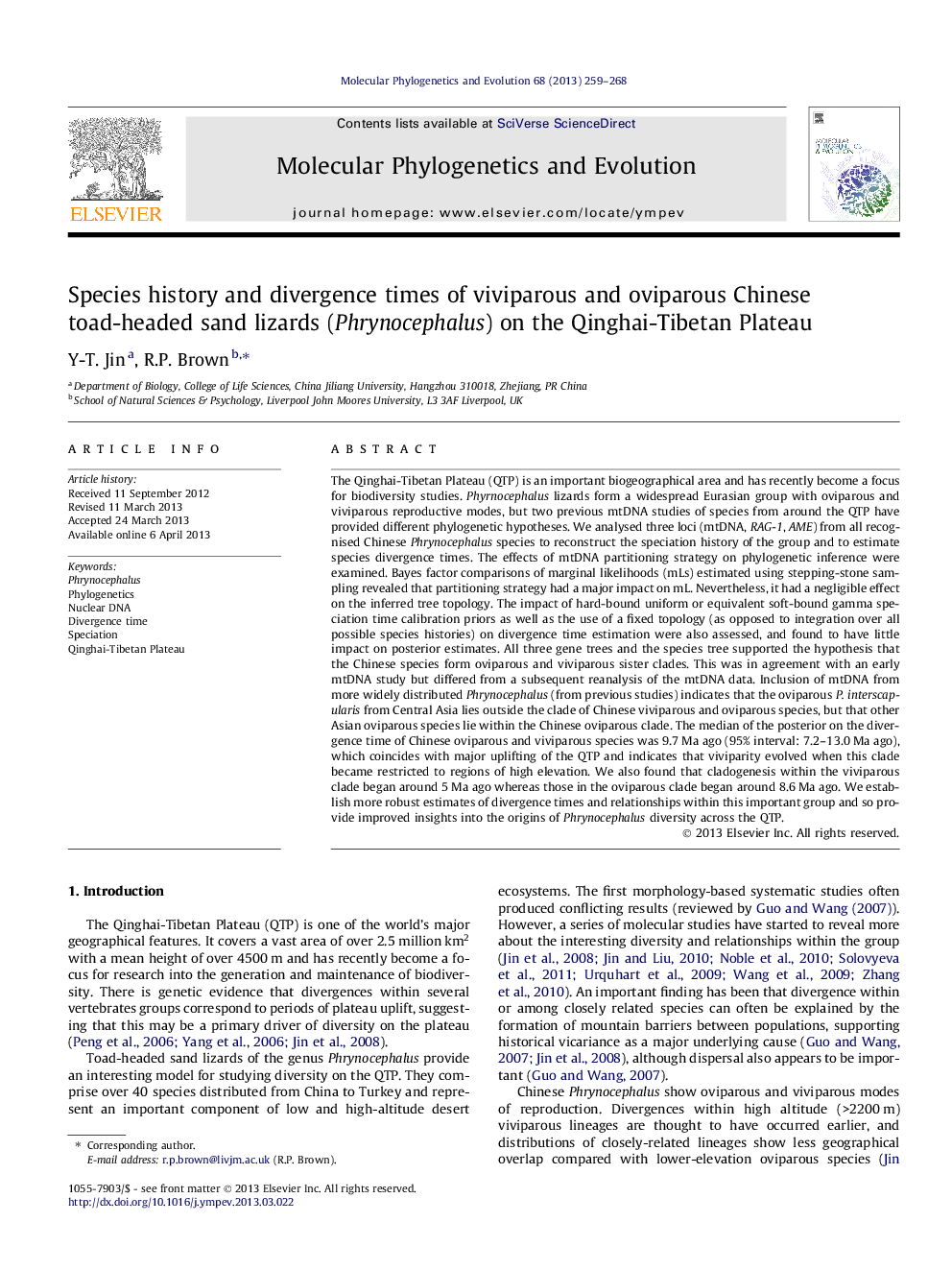| Article ID | Journal | Published Year | Pages | File Type |
|---|---|---|---|---|
| 2833995 | Molecular Phylogenetics and Evolution | 2013 | 10 Pages |
•Oviparous and viviparous Phyrnocephalus lizards from China form sister taxa.•This resolves recent debates about the relationships among these species.•The two groups diverged about 9.7 Ma ago (95% posterior interval: 7.2–13.0 Ma ago).•The high altitude viviparous lineage appears to have evolved during major uplift of the Qinghai-Tibetan plateau.•Speciation events tend to be more recent in the viviparous clade (<5 Ma).
The Qinghai-Tibetan Plateau (QTP) is an important biogeographical area and has recently become a focus for biodiversity studies. Phyrnocephalus lizards form a widespread Eurasian group with oviparous and viviparous reproductive modes, but two previous mtDNA studies of species from around the QTP have provided different phylogenetic hypotheses. We analysed three loci (mtDNA, RAG-1, AME) from all recognised Chinese Phrynocephalus species to reconstruct the speciation history of the group and to estimate species divergence times. The effects of mtDNA partitioning strategy on phylogenetic inference were examined. Bayes factor comparisons of marginal likelihoods (mLs) estimated using stepping-stone sampling revealed that partitioning strategy had a major impact on mL. Nevertheless, it had a negligible effect on the inferred tree topology. The impact of hard-bound uniform or equivalent soft-bound gamma speciation time calibration priors as well as the use of a fixed topology (as opposed to integration over all possible species histories) on divergence time estimation were also assessed, and found to have little impact on posterior estimates. All three gene trees and the species tree supported the hypothesis that the Chinese species form oviparous and viviparous sister clades. This was in agreement with an early mtDNA study but differed from a subsequent reanalysis of the mtDNA data. Inclusion of mtDNA from more widely distributed Phrynocephalus (from previous studies) indicates that the oviparous P. interscapularis from Central Asia lies outside the clade of Chinese viviparous and oviparous species, but that other Asian oviparous species lie within the Chinese oviparous clade. The median of the posterior on the divergence time of Chinese oviparous and viviparous species was 9.7 Ma ago (95% interval: 7.2–13.0 Ma ago), which coincides with major uplifting of the QTP and indicates that viviparity evolved when this clade became restricted to regions of high elevation. We also found that cladogenesis within the viviparous clade began around 5 Ma ago whereas those in the oviparous clade began around 8.6 Ma ago. We establish more robust estimates of divergence times and relationships within this important group and so provide improved insights into the origins of Phrynocephalus diversity across the QTP.
Graphical abstractFigure optionsDownload full-size imageDownload as PowerPoint slide
